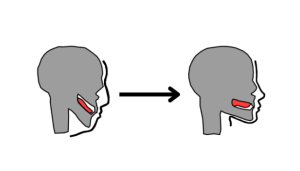“Amanda Knox” adds perspective to a widely-known trial
Knox is interviewed to recount her experience of being convicted for Kercher’s murder.
October 8, 2016
Wherever murder mysteries are concerned, it is commonplace for us to think about discovering the killer, or whether a suspect is guilty or innocent. “Amanda Knox”, released on Netflix on Sept. 30 takes a different approach, accounting for the media’s role in the case and contributing personal narratives to Seattle native Amanda Knox’s trial story.
For those who are not familiar with her, Knox was beginning her study abroad in Perugia, Italy in Sept. 2007. On Nov. 2, police found her flatmate, British student Meredith Kercher’s body in their apartment, with a slit throat and evidence of sexual assault. Knox and then-boyfriend Raffaele Sollecito were convicted, and Knox was ultimately held in Italy until 2011, being exonerated by their highest court in 2015.
Directed by Rod Blackhurst and Brian McGinn, the documentary is told through interviews with Daily Mail reporter Nick Pisa, prosecutor Giuliano Mignini, Sollecito and Knox herself. Despite hearing the story told from each person’s point of view, “Amanda Knox’s” creators are clearly siding with Knox, portraying her as the Italian justice system’s victim. This is justified, however, as aspects of the film suggest that whether Knox is innocent or guilty of Kercher’s murder, the way that the media and prosecution treated Knox was unwarranted.
One such aspect of “Amanda Knox” is in the interview with a reporter that encapsulated the press’s attitude towards Knox so well. Pisa’s recounts his experience in covering Knox’s conviction and trial, blatantly admitting that he and competing journalists would make up facts for the sake of gaining readers.
Jarring headlines such as “Meridith sex killing” and “Foxy Knoxy”, taken from her MySpace profile, are displayed throughout the film. A commentator in a news clip says that Knox, walking into the courtroom, “could use hair and makeup, but I guess you don’t get that in jail.” Pisa (crassly) mentioned the appeal of the trial stemmed from, “girl-on-girl crime, if you’d like.” Overall, “Amanda Knox” bears many examples of societal misogyny, and hopefully will make viewers aware of its presence in today’s world.
“Amanda Knox” also examines the poorly conducted investigations in gathering evidence against Knox. For example, interviews with forensic expert Dr. Stefano Conti and Dr. Carla Vecchiotti discuss how key evidence was invalidated due to contamination. Mignini, who was one of the first people to suspect Knox, however, discusses her behavior. The documentary does not delve any further into this, leaving the viewer with questions concerning Mignini’s credibility.
Though the film adequately cites occurrences of injustice towards Knox, it fails to analyze the events to give viewers a deeper understanding of the events. In the end, “Amanda Knox” does not provide new information that has not already been written or reported about. The documentary also could have explained Italy’s judicial system, explaining prison sentences and appeals processes.
Over the years, many of us probably have forgotten about Knox’s conviction, or are too young to have heard of it at all. “Amanda Knox” simply presents Knox’s story with intriguing personal accounts, and with visuals equally as engaging.
















